Brain aneurym risk analysis developed by neurosurgeons
ANRISK® is a non-generative AI model developed by a team of neurosurgery experts using 8.8 million person-years worth of data.
What is a brain aneurysm?
Most brain aneurysms show little to no noticeable symptoms before rupture, making early detection challenging. Fortunately, brain aneurysms are almost always curable if detected early, allowing patients to take appropriate preventive measures.

Healthy blood vessel
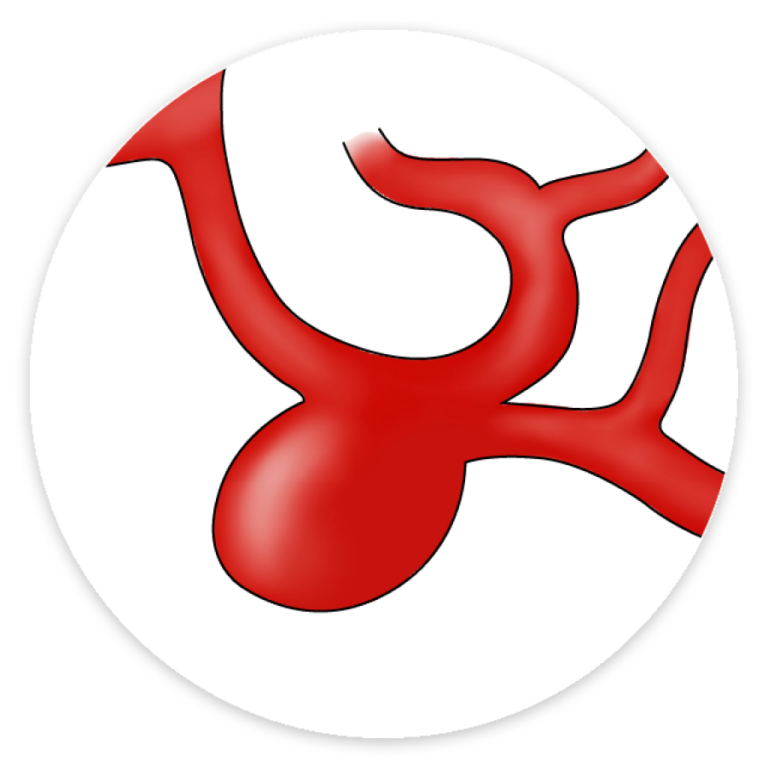
Brain aneurysm
The obstacles of early detection
If left untreated, brain aneurysms can rupture, often leading to fatal outcomes. Currently, there is no established system for screening high-risk individuals, and diagnosis relies solely on brain imaging. However, these tests are not widely accessible, are often expensive, and carry potential risks and side effects.
Fatality rate in case of rupture
Rate of permanent neurological damage
Percentage of people who will develop a second brain aneurysm
Source: Statistics and Facts. The Brain Aneurysm Foundation
Brain aneurysms vs. other diseases
Unlike many other serious diseases, brain aneurysms often show no symptoms or warning signs that suggest the need for treatment. While other conditions are regularly screened for, brain aneurysms are frequently overlooked.
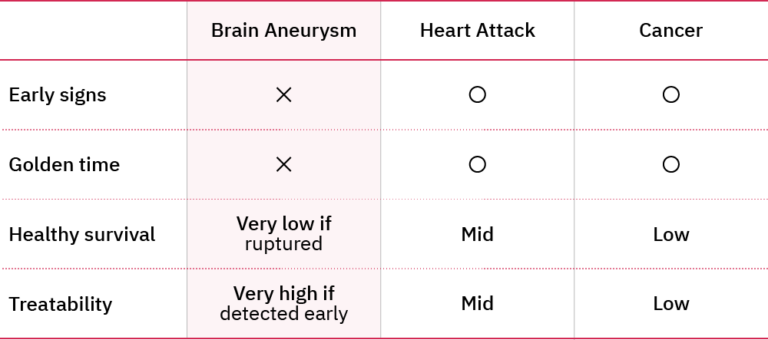
One-step risk analysis
Analyze the risk of brain aneurysms for small or large-scale groups. Upload the data points from a standard health screening exam, request the analysis, and immediately download personalized reports for each examinee.
- Age
- Sex
- Height
- Weight
- Blood pressure
- Waist circumference
- Blood sugar
- Total cholesterol
- Triglycerides
- HDL / LDL
- Hemoglobin
- Creatinine
- GOT/AST, GPT/ALT, GGT/GTP
- Family history of stroke, hypertension, cardiovascular disease, diabetes
- Smoking status
The ANRISK® platform
Access the ANRISK® platform via your web browser without the need to install additional software or hardware.
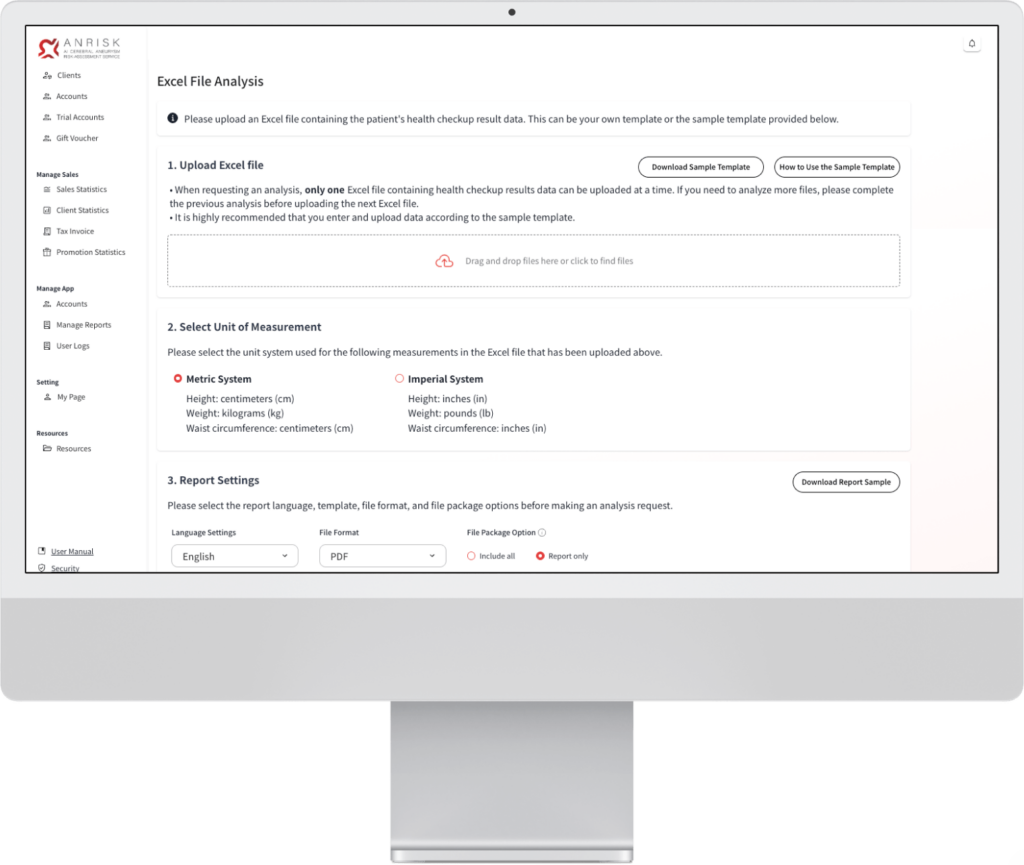
A highly personalized analysis report
Once the analysis has been completed, a report is generated for each examinee. The report provides a highly personalized and in-depth analysis of how each parameter significantly impacts the risk level, as well as a detailed guide to lowering the risk level.
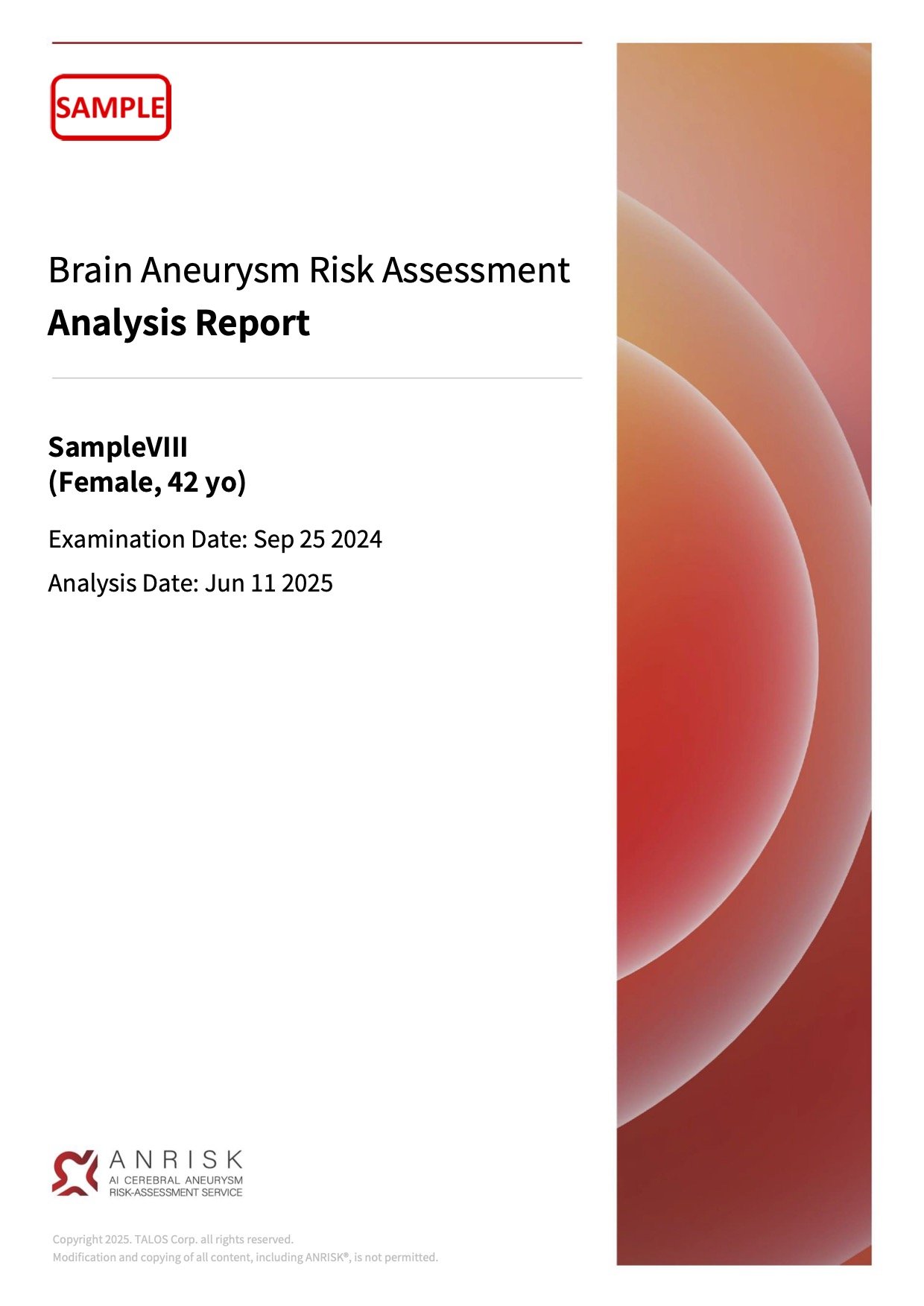
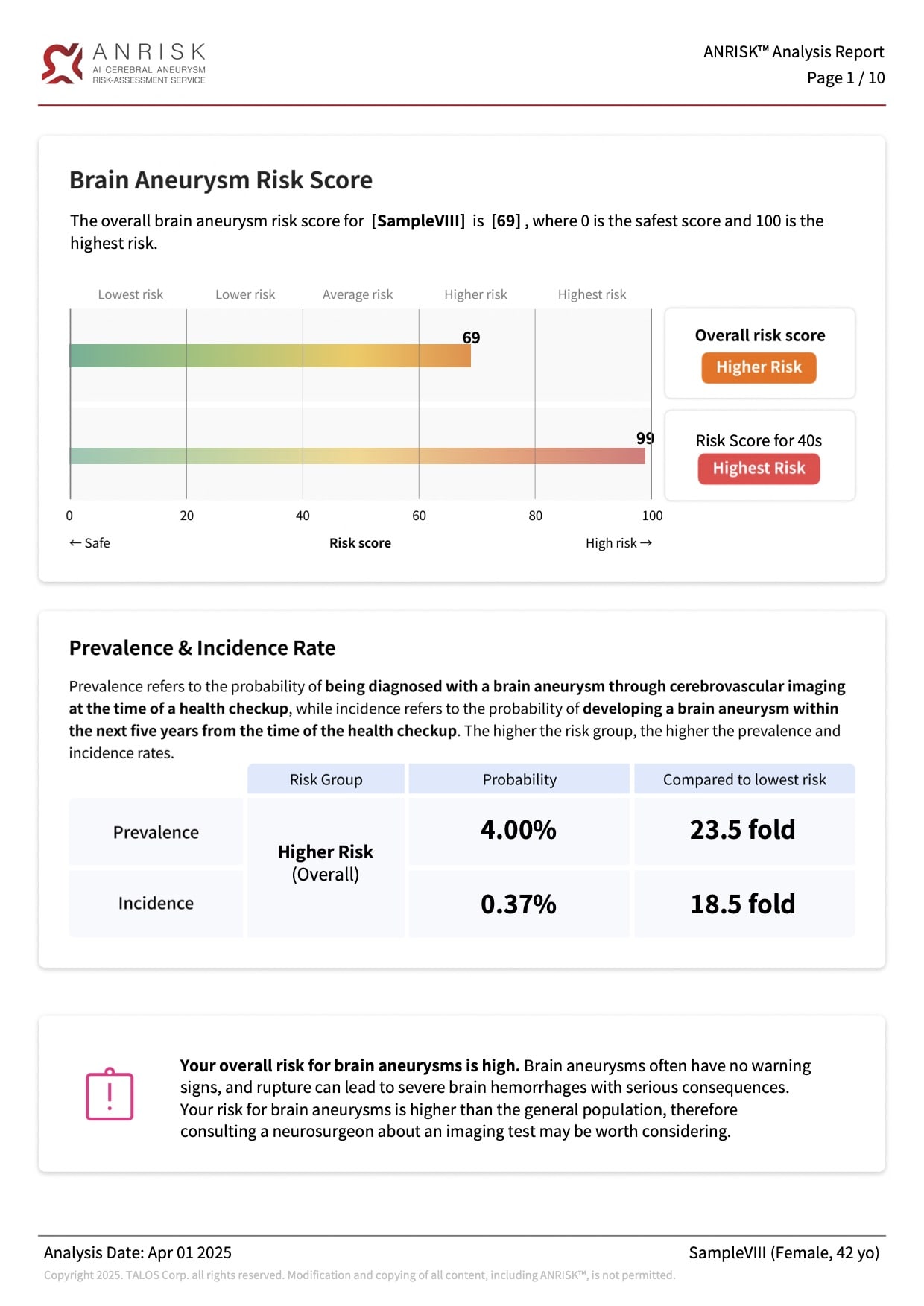
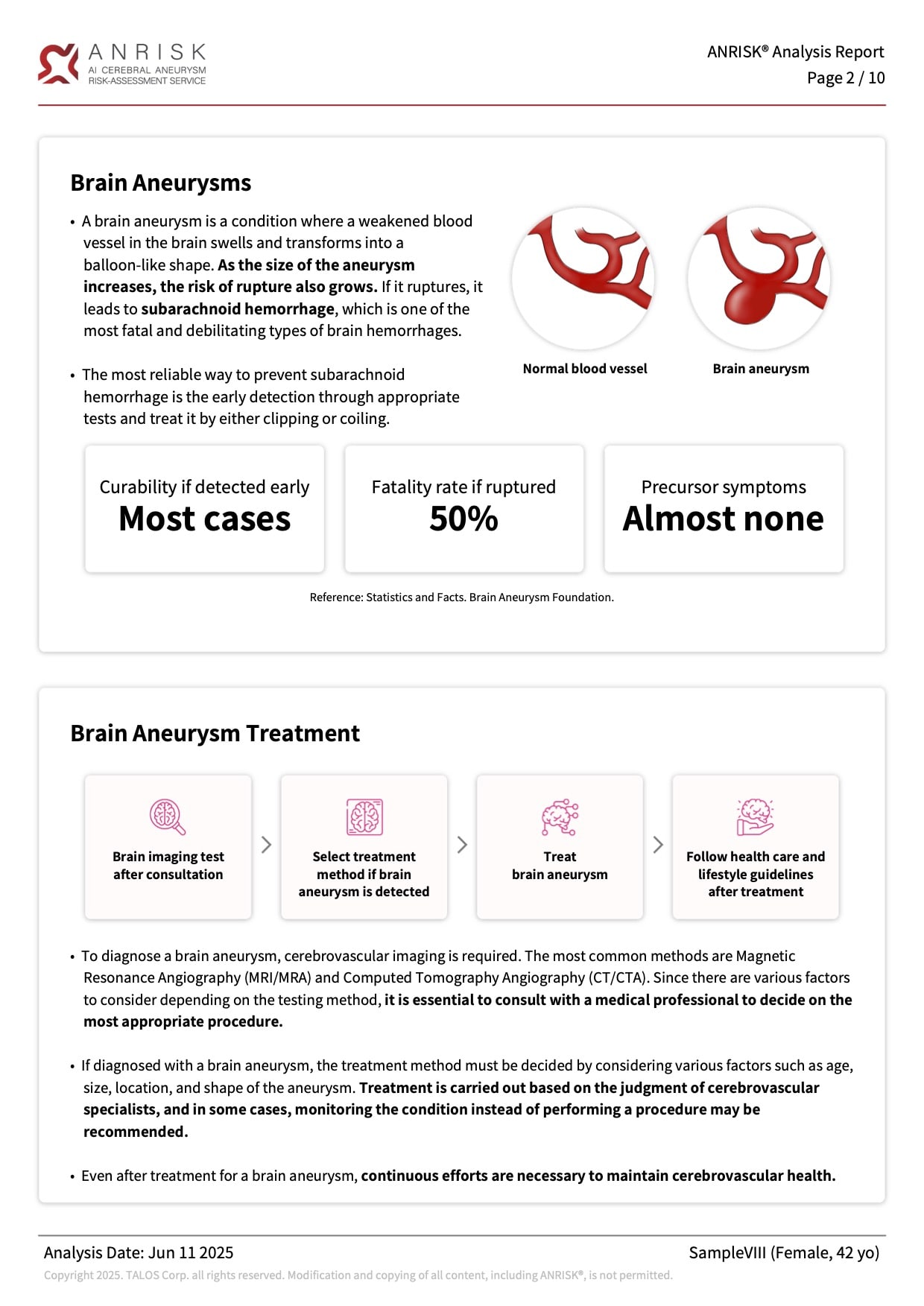
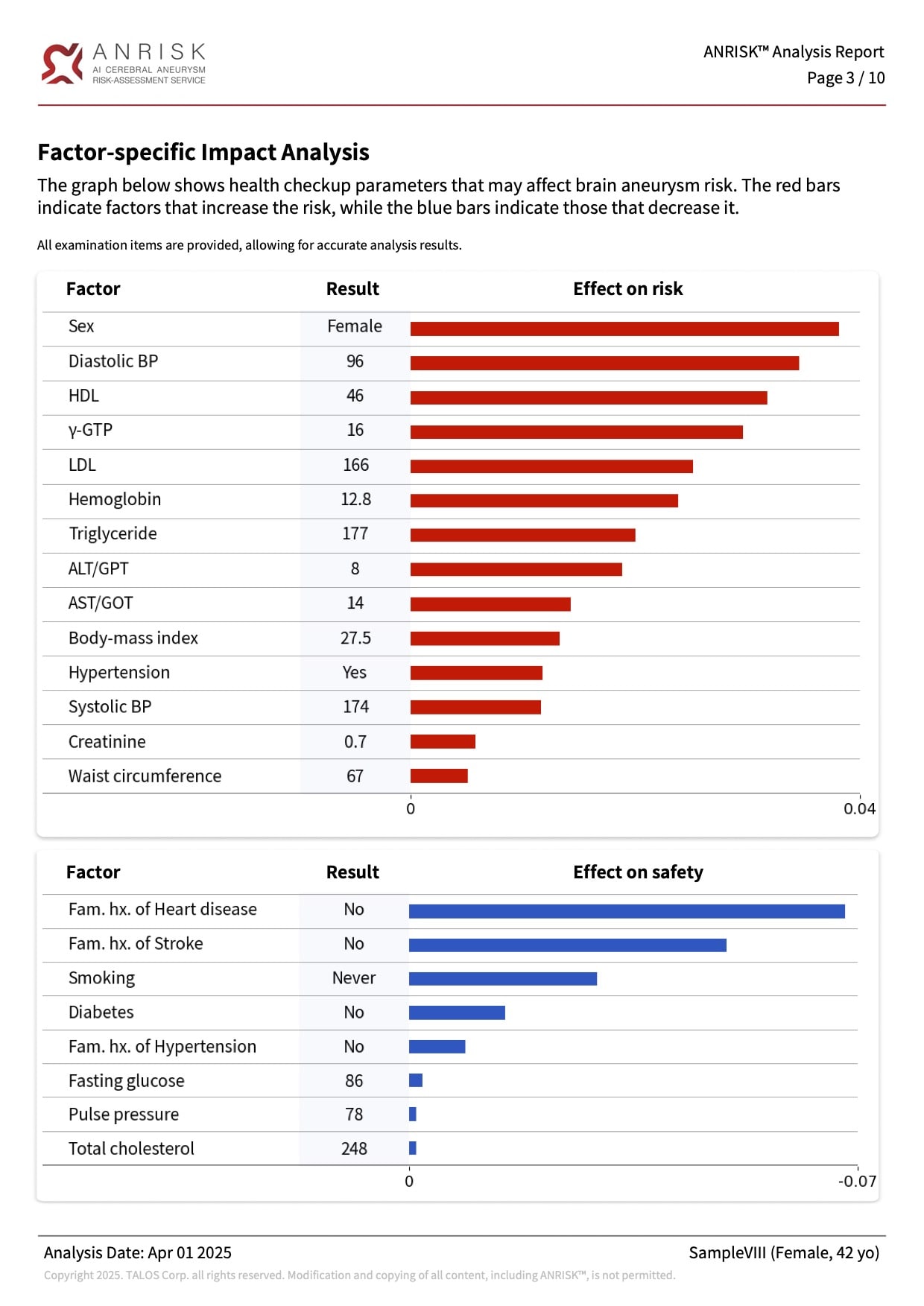
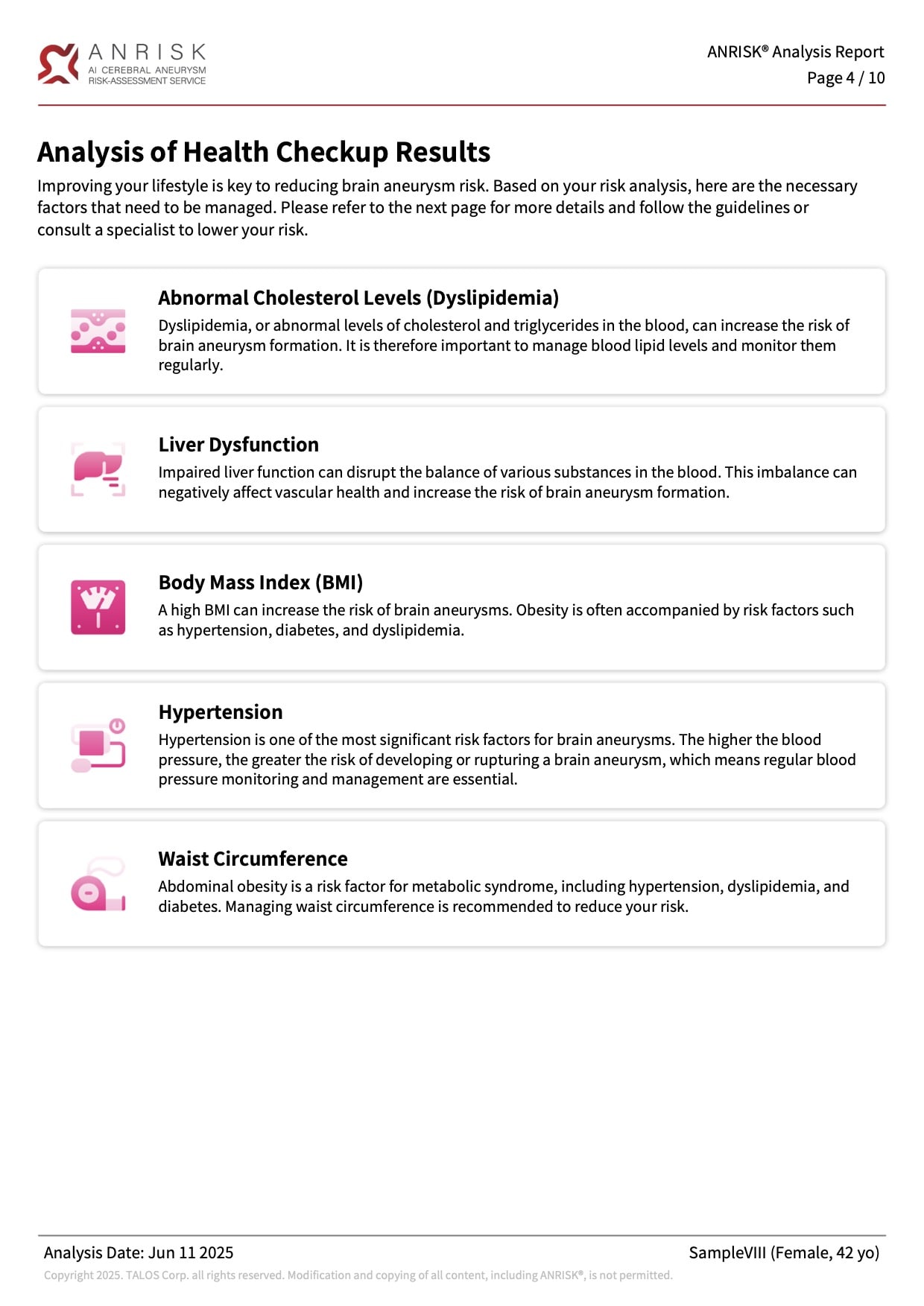
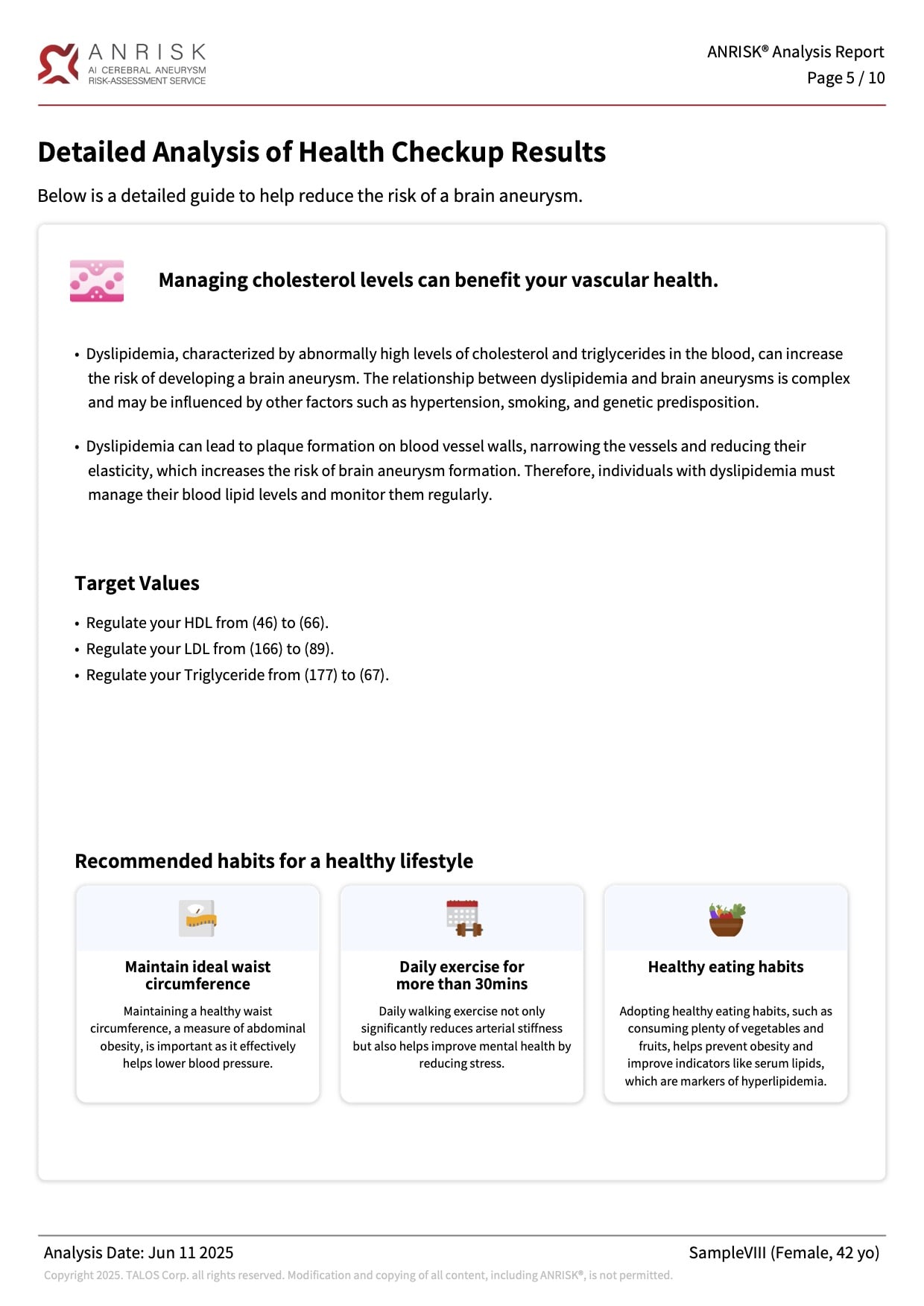
Sample report pages
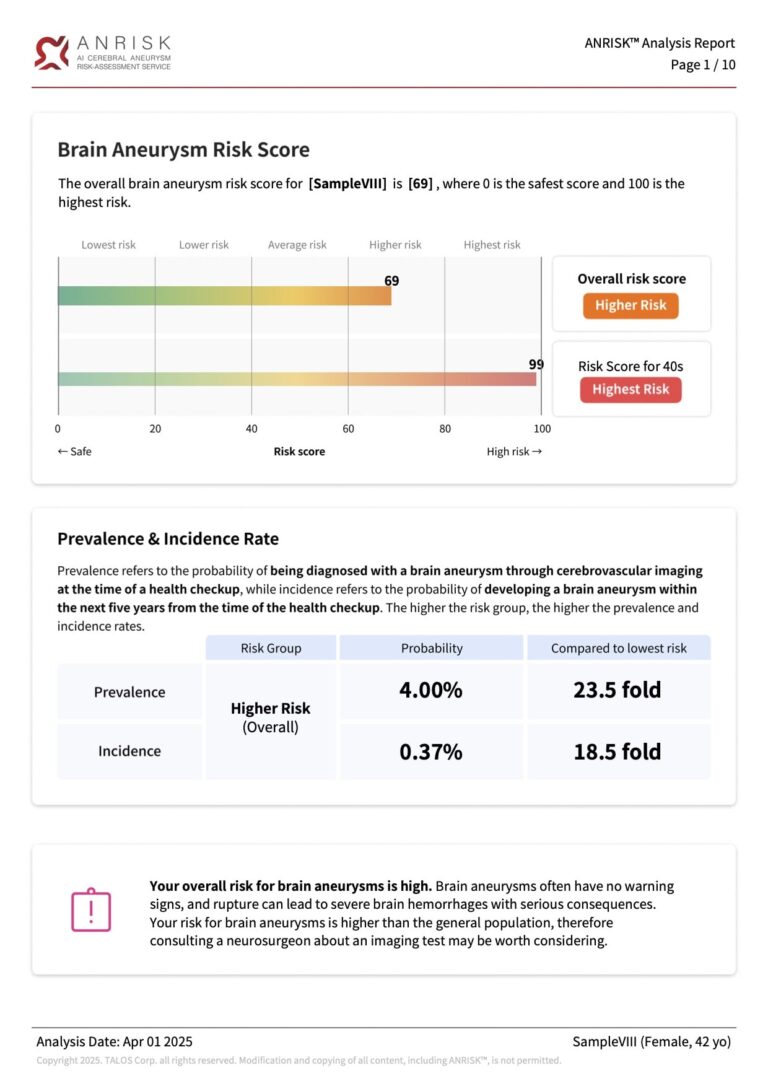
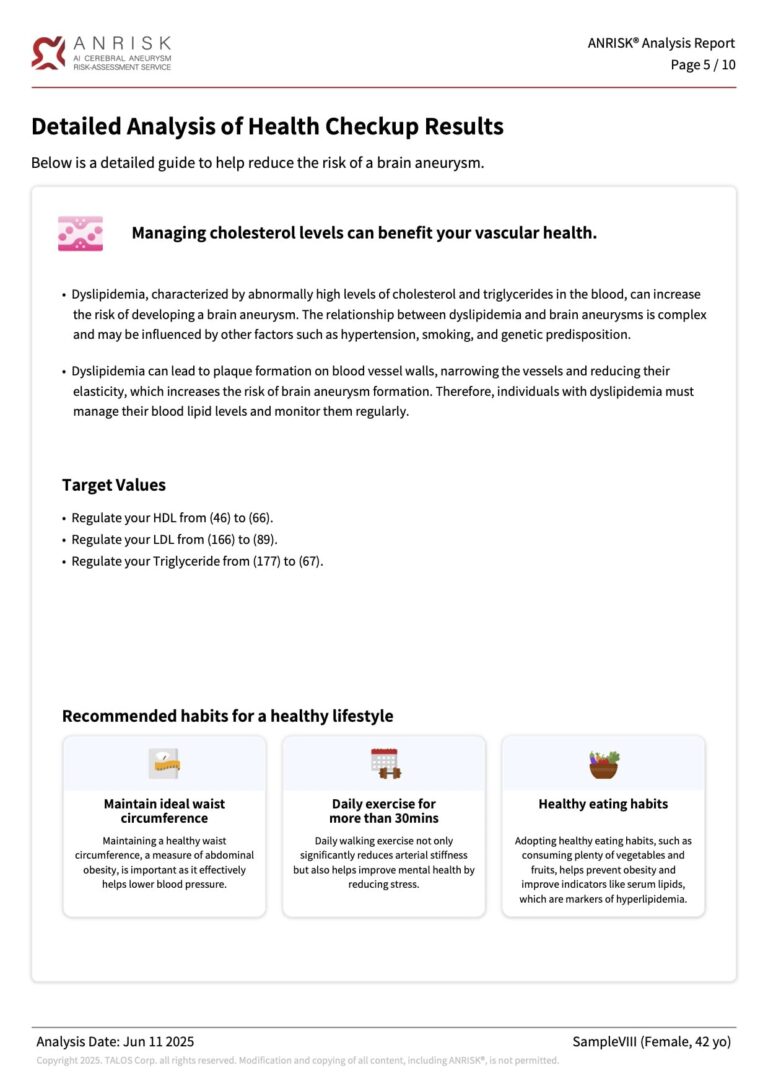
The ANRISK® process

Step 1
Prepare health screening results.

Step 2
Input data to the ANRISK® platform and run analysis.

Step 3
Download a personalized analysis report for each examinee.

Step 4
Consult a specialist to create a plan to help lower risk levels.
Email us with any questions or service inquiries and we will be in touch with you as soon as possible.
